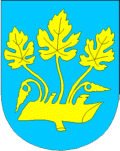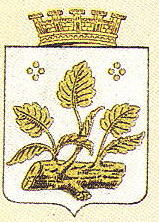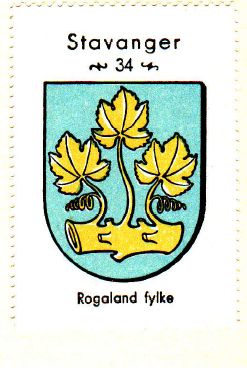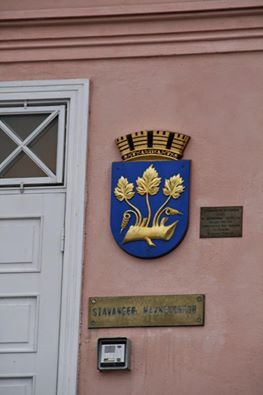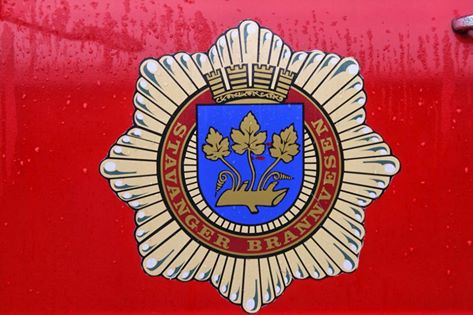Stavanger: Difference between revisions
Knorrepoes (talk | contribs) |
Knorrepoes (talk | contribs) |
||
| Line 32: | Line 32: | ||
|align="center"|[[File:stavanger1.jpg|center]] <br/>The arms in the city (image by Jan-Erik Løken) | |align="center"|[[File:stavanger1.jpg|center]] <br/>The arms in the city (image by Jan-Erik Løken) | ||
|- | |- | ||
|align="center"|[[File: | |align="center"|[[File:stavanger2.jpg|center]] <br/>The arms on a historical fire brigade car (image by Jan-Erik Løken) | ||
|} | |} | ||
Revision as of 17:12, 23 April 2014
| Heraldry of the World Civic heraldry of Norway - Norske Kommunevåpen |
STAVANGER
Province : Rogaland
Additions : 1965 Hetland, Madla
Official blazon
På blå botn ein gull kvista vinranke.
Origin/meaning
The arms were granted on August 11, 1939.
The oldest known seal of Stavanger dates from 1591 and shows an branch with three leaves. Later images showed the leaves as oak leaves, but as the image on the oldest seal is not very clear, there has been much speculation on what kind or plant was actually shown, like an oak, hops, aspen or a vine.
In the 19th century the branch was placed in a shield and clearly shown as an oak tree, which lasted until the early 20th century.
| Coat of arms of Stavanger in the early 20th century. |
New etymological data however may indicate that the branch is a canting element and thus a vine tree (from vinstav in Norwegian). Similarly it has been speculated that the vine is a symbol of Christ, and thus chosen as a religious symbol. So when the arms were officially granted in 1939 the branch is described as a vine branch.
| The arms in the Coffee Hag album +/- 1930 |
The arms in the city (image by Jan-Erik Løken) |
| The arms on a historical fire brigade car (image by Jan-Erik Løken) |
Literature : Norwegian Municipal Network; Capellen, 1987

